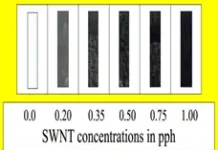By Nick Talken, senior chemist, Molecule Corp., and Paul Snowwhite, CEO, Applied Molecules
Background
Ultraviolet- and electron beam-curable resins are rapidly becoming more commonplace in many existing and emerging industries. When exposed to UV or EB, these resins undergo rapid polymerization, from liquid to solid in seconds or milliseconds. Traditionally, UV/EB materials have been used for coatings and inks in industrial applications ranging from graphic arts and wood coatings to packaging. However, with the advent of 3D printing, these resins are beginning to move out of industry and closer to the end user. Specifically, emerging 3D printing technologies, such as stereolithography (SLA), have put printers and UV resins in non-laboratory, non-industrial settings, such as schools, libraries, workshops and home garages. SLA is a relatively inexpensive and easy method that can be used to print high-quality objects from anywhere in the world. However, with the adoption of 3D printing growing every year, how are people dealing with the disposal of the byproduct resin from the printers?
Safety/environmental concerns
From large industrial companies to 3D printing hobbyists, exposure to liquid UV resins is increasing. However, the safety knowledge and safety costs associated with each of these groups are significantly different:
Industrial applications
Many large industrial companies use UV/EB resins for a variety of applications, including graphic arts, packaging, dental, medical adhesives, photoresists, flooring and production 3D printing. These companies must follow strict Environmental Protection Agency (EPA) guidelines when dealing with and handling the waste materials from these processes. Non-governmental organizations (NGO), including RadTech International North America, have issued guidance to assist the industry in this challenge. RadTech concluded “even though UV/EB chemical wastes may not be classified as hazardous, these materials frequently are disposed of by incineration or in a hazardous landfill to avoid inadvertent contact or public contact with potentially irritating substances.”1
Not only is this bad for the environment and expensive to maintain, but companies that are deemed to be “large quantity generators (LQGs)” of hazardous waste face increased governmental and public scrutiny. Therefore, many in industry are looking for ways to reduce or eliminate the requirement to dispose of UV/EB byproducts as hazardous waste.
Hobbyist 3D printing
Due to the mainstream push for 3D printing, everyday consumers now are in much more frequent contact with liquid UV/EB resins. Differing from industry, these consumers are not always aware of the correct processing and disposal practices. In addition, these consumers are not equipped and lack the resources to correctly deal with hazardous waste disposal.
Again, NGOs such as RadTech have released guidance on best practices when dealing with this material. However, experts have said hobbyists should “cure unreacted UV-curable resins by leaving them in sunlight for a few hours or expose them to a UV light.” Uncured, liquid material should be disposed of as hazardous waste.2
These techniques are far from ideal. First, putting liquid material in the sun or exposing it to UV does not guarantee reaction of material beyond the exposed surface. If the resin is based on free radical polymerization, the depth of cure within the exposed material will be minimal, leaving the exposed surface a solid and the remainder of the material a liquid. If the resin is based on cationic polymerization, it may fully polymerize, but with the risk for a significant and dangerous exothermic reaction due to the rapid polymerization of a bulk material. Therefore, an alternative solution is needed so individuals can reduce or eliminate the requirement to dispose of UV/EB byproducts as hazardous waste.
Additive ensures solid waste
If a waste product is a solid waste, it then must be determined if it is hazardous. Wastes are defined as hazardous by the EPA if they are specifically named on one of the four lists of hazardous wastes located in Subpart D of 40 CFR 261 (F, K, P, U) or if they exhibit one of four characteristics located in Subpart C of 40 CFR 261 (characteristic wastes). Most solidified UV/EB resins do not qualify as hazardous waste and therefore can be disposed of as nonhazardous.3

EcoCur™ was developed by Molecule Corp. and is specifically designed to solve the above problems for 3D printing, as well as for UV inkjet and all other UV/EB applications. When added to UV-curable byproducts, the additive rapidly hardens the entire resin so that the user may safely and legally dispose of the solid in most municipalities. The additive was specially designed to control the exothermic reaction (<45ºC), yet quickly make 100% UV-curable products polymerize into a solid. Figure 1 illustrates the reaction kinetics of 1kg of a standard 3D printing resin (PR48), solidified with 50 grams of the additive, which was added directly to the 1kg bottle and shaken for 30 seconds. Temperature was measured in the middle of the resin.
Conclusions
Traditional methods of hazardous waste disposal are costly and environmentally unfriendly, and contribute to reinforcing a negative public perception of a hazardous chemical industry. With the emergence of 3D printing, this problem has grown to individuals, who are even less prepared than industry to tackle this challenge. EcoCur intends to solve these issues, allowing for nonhazardous byproduct disposal for both large and small consumers of UV/EB materials.
References
- http://www.radtech.org/images/sustainability_pdfs/GuidanceCleanupDisposal.pdf
- http://radtech.org/images/health-safety/3DPrinterSafetyPoster_revised_11x17.pdf
- http://www.molecule.ink/files/EcEcoCurDataSheet.pdf






